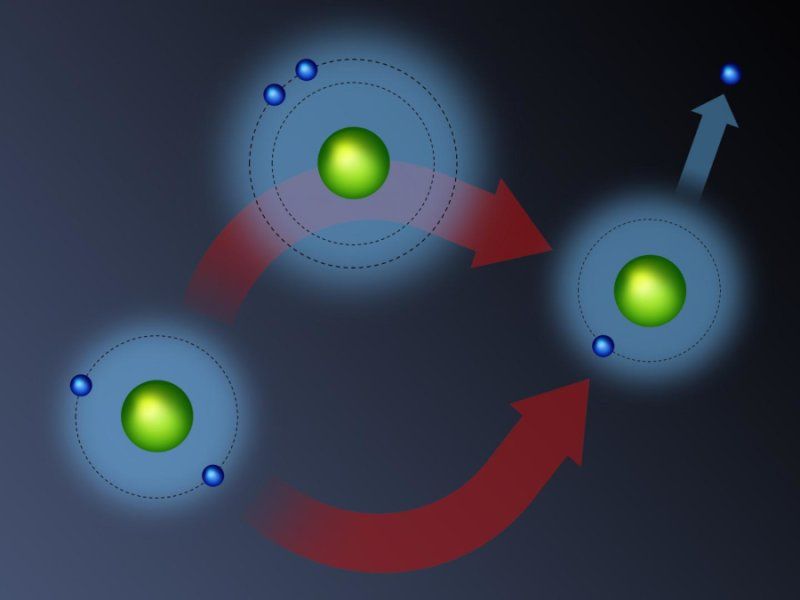Page 10748
Nov 10, 2016
The patented history and future of… the Apple Watch
Posted by Karen Hurst in categories: futurism, wearables
Rarely a week goes by at Wareable where a patent from some big tech company doesn’t get us guessing about the future.
Like Hansel and Gretel with smartwatches, we follow the proverbial tech crumbs all the way to the end, but we’re quick to forget how many of the ideas actually make the cut — and which get lost along the way.
So we’re going to a mini-series we’re calling ‘The patented history and future of…’, looking at some of the big launches in wearable tech, starting with the Apple Watch. These are going to be miniature timelines, small trips down memory lane looking at the patents that led up to the announcement and those that have happened since, to see what came true, what didn’t, and what might still be to come.
Continue reading “The patented history and future of… the Apple Watch” »
Nov 10, 2016
Tailored carbon nanomaterials could help treating neurological diseases
Posted by Karen Hurst in categories: biotech/medical, nanotechnology, neuroscience
Tomi Laurila’s research topic has many quirky names.
‘Nanodiamond, nanohorn, nano-onion…’ lists off the Aalto University Professor, recounting the many nano-shapes of carbon. Laurila is using these shapes to build new materials: tiny sensors, only a few hundred nanometres across, that can achieve great things due to their special characteristics.
Tl.pngFor one, the sensors can be used to enhance the treatment of neurological conditions. That is why Laurila, University of Helsinki Professor Tomi Taira and experts from HUS (the Hospital District of Helsinki and Uusimaa) are looking for ways to use the sensors for taking electrochemical measurements of biomolecules. Biomolecules are e.g. neurotransmitters such as glutamate, dopamine and opioids, which are used by nerve cells to communicate with each other.
Nov 10, 2016
Quantum Weirdness is Everywhere in Life
Posted by Karen Hurst in categories: particle physics, quantum physics
Weird quantum effects are so delicate it seems they could only happen in a lab. How on Earth can life depend on them?
The point of the most famous thought-experiment in quantum physics is that the quantum world is different from our familiar one. Imagine, suggested the Austrian physicist Erwin Schrödinger, that we seal a cat inside a box. The cat’s fate is linked to the quantum world through a poison that will be released only if a single radioactive atom decays. Quantum mechanics says that the atom must exist in a peculiar state called ‘superposition’ until it is observed, a state in which it has both decayed and not decayed. Furthermore, because the cat’s survival depends on what the atom does, it would appear that the cat must also exist as a superposition of a live and a dead cat until somebody opens the box and observes it. After all, the cat’s life depends on the state of the atom, and the state of the atom has not yet been decided.
Yet nobody really believes that a cat can be simultaneously dead and alive. There is a profound difference between fundamental particles, such as atoms, which do weird quantum stuff (existing in two states at once, occupying two positions at once, tunnelling through impenetrable barriers etc) and familiar classical objects, such as cats, that apparently do none of these things. Why don’t they? Simply put, because the weird quantum stuff is very fragile.
Nov 10, 2016
What Sonic Black Holes Say About Real Ones
Posted by Karen Hurst in categories: cosmology, quantum physics
Can a fluid analogue of a black hole point physicists toward the theory of quantum gravity, or is it a red herring?
Nov 10, 2016
Two paths at once: Watching the buildup of quantum superpositions
Posted by Karen Hurst in categories: particle physics, quantum physics
Scientists have observed how quantum superpositions build up in a helium atom within femtoseconds. Just like in the famous double-slit experiment, there are two ways to reach the final outcome.
Nov 10, 2016
Stable quantum bits can be made from complex molecules
Posted by Karen Hurst in categories: chemistry, computing, information science, quantum physics
Quantum computing is about to get more complex. Researchers have evidence that large molecules made of nickel and chromium can store and process information in the same way bytes do for digital computers. The researchers present algorithms proving it’s possible to use supramolecular chemistry to connect “qubits,” the basic units for quantum information processing, in Chem on November 10. This approach would generate several kinds of stable qubits that could be connected together into structures called “two-qubit gates.”
“We have shown that the chemistry is achievable for bringing together two-qubit gates,” says senior author Richard Winpenny, Head of the University of Manchester School of Chemistry. “The molecules can be made and the two-qubit gates assembled. The next step is to show that these two-qubit gates work.”
Nov 10, 2016
DARPA Making Good Progress in Developing ‘Robotic Co-Pilots’ for US Warplanes
Posted by Karen Hurst in categories: military, robotics/AI
ALIAS envisions a custom, drop-in, removable kit that will promote the addition of high levels of automation into existing aircraft, enabling operation with reduced onboard crew.
The program intends to exploit the considerable advances made in aircraft automation systems over the past 50 years, and similar advances in remotely piloted aircraft automation, to help reduce pilot workload, augment mission performance and improve aircraft safety.
As an automation system, ALIAS aims to support execution of an entire mission from takeoff to landing, even in the face of contingency events such as aircraft system failures.
Continue reading “DARPA Making Good Progress in Developing ‘Robotic Co-Pilots’ for US Warplanes” »
Nov 10, 2016
Scientists develop new type of HIV test on a USB stick
Posted by Steve Hill in categories: biotech/medical, computing
HIV diagnotistic on a USB stick smile
LONDON – Scientists in Britain have developed a type of HIV test using a USB stick that can give a fast and highly accurate reading of how much virus is in a patient’s blood.
The device, created by scientists at Imperial College London and the privately-held U.S. firm DNA Electronics, uses a drop of blood to detect HIV, then creates an electrical signal that can be read by a computer, laptop or handheld device.
Continue reading “Scientists develop new type of HIV test on a USB stick” »
Nov 10, 2016
Lifespans Are (Not) Long Enough
Posted by Steve Hill in categories: biotech/medical, ethics, life extension, neuroscience
Aubrey de Grey and Brian Kennedy debate the motion that “Lifespans are long enough” at Intelligence2. This was a great show and the results speak for themselves as do the convincing arguments presented by Brian and Aubrey. If you missed it first time around earlier this year you should watch it now.
“What if we didn’t have to grow old and die? The average American can expect to live for 78.8 years, an improvement over the days before clean water and vaccines, when life expectancy was closer to 50, but still not long enough for most of us. So researchers around the world have been working on arresting the process of aging through biotechnology and finding cures to diseases like Alzheimer’s and cancer. What are the ethical and social consequences of radically increasing lifespans? Should we accept a “natural” end, or should we find a cure to aging?”
On February 3rd, 2016, SRF’s Chief Science Officer Aubrey de Grey joined forces with Buck Institute for Research on Aging President/CEO Brian Kennedy to oppose the motion that “Lifespans Are Long Enough”, in a debate hosted at New York’s Kaufman Center by Intelligence2 Debates. The team proposing the motion comprised Paul Root Wolpe, Director of the Emory Center for Ethics, and Ian Ground of the UK’s Newcastle University.


















